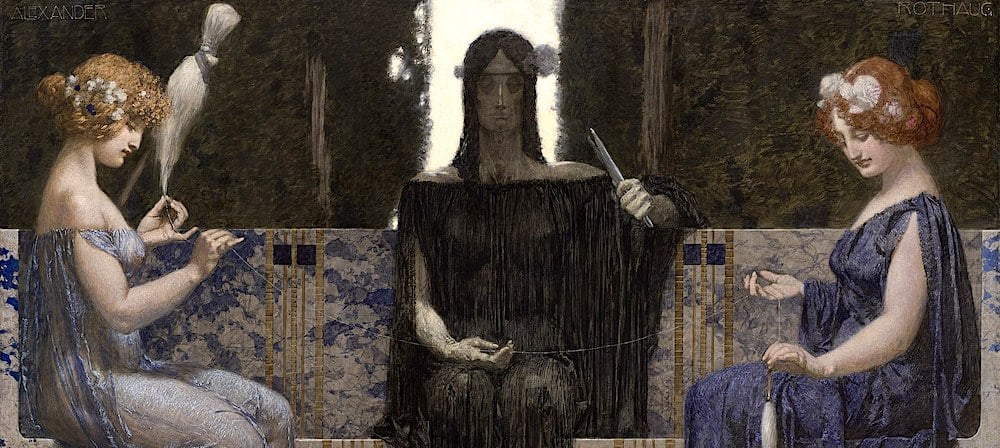
The Moirai, usually also known as the Fates of Greek mythology, stand for the idea of destiny in the world of the ancient Greeks.
It was common for the ancient Greeks to give shape to deities and gods that would represent and explain abstract ideas.
The Fates were, in a way, something more than a way to simply represent destiny, however, as they actually took control of it.
In fact, they were in charge of controlling people’s lives in a number of ways, from their birth until they died.
Moirai names were Clotho, Lachesis, and Antropos
According to myth, the Fates were three of the six children that Zeus and the goddess of justice, Themis, had conceived.
The remaining children were known as the Horai, or the Hours, who were the goddesses of the seasons.
The three Moirai names were Clotho, Lachesis, and Antropos, and each of them was the owner of a distinctive character which turned them into unique beings.
Clotho was the Fate who was also known by the name of Spinner because it was her duty to spin the thread of a person’s life from her distaff directly to her spindle.
She also made major decisions, for instance when a person was to be born. This allowed her to not only choose who was born, but also when gods or mortals were to be saved or put to death.
Once this task had been performed, Lachesis – always dressed in white – was in charge of its measurement, and according to every person’s length of thread, their lifespans were different.
This would represent their destiny, and she was in charge of deciding how much time of life was to be allotted to each person. It is also believed that she was in charge of choosing the fate of every person once the thread had been measured.
Atropos was charged with cutting the thread of a person’s life
Atropos, who was the oldest of the three Fates, was also known as the Inevitable. She was closely related to death since it was Atropos who would choose the mechanism of death.
It was her task to end the life of mortals by cutting their thread. It was believed that the Fates would appear within three days of someone’s birth to decide their fate.
The three Moirai, or Fates represented the cycle of life, essentially standing for birth, life, and death.
They would spin (Clotho), draw out (Lachesis) and cut (Atropos) the thread of life.
Unlike the Horai, their siblings and the goddesses of the seasons and other natural periods of time, who were always shown as youthful, beautiful women, the Moirai were depicted as ugly and old women in antiquity. Many times they were portrayed as stern, inflexible, and severe, thus making people fear their own destiny.
See all the latest news from Greece and the world at Greekreporter.com. Contact our newsroom to report an update or send your story, photos and videos. Follow GR on Google News and subscribe here to our daily email!



